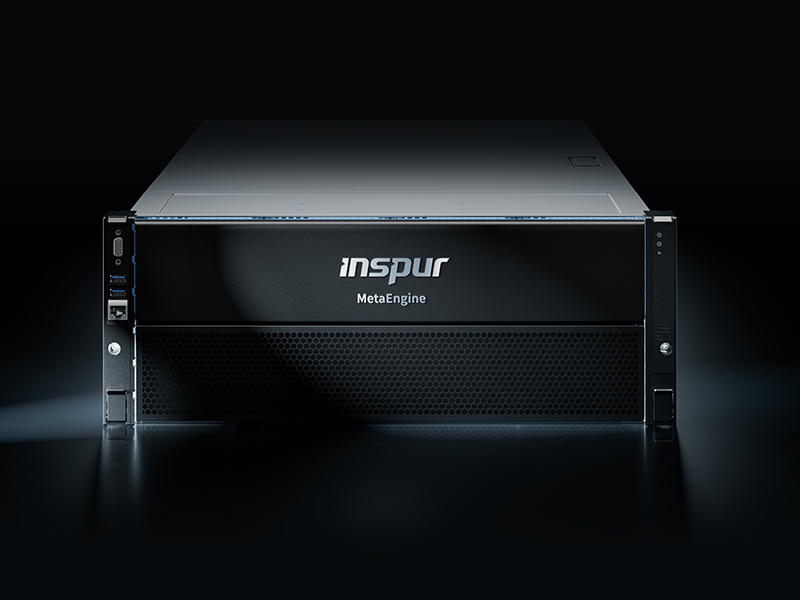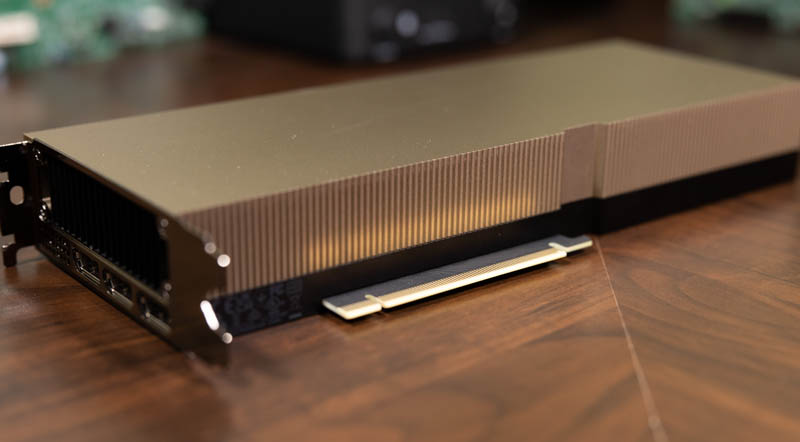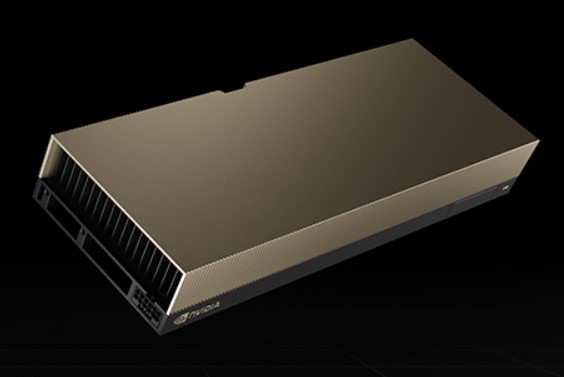As part of GTC 2022, we had the chance to discuss with Inspur its Omniverse plans. Also, what it practically takes to implement the Omniverse. As part of this, STH spoke to Gavin Wang, who we last spoke with in Inspur MetaEngine for NVIDIA OVX. Gavin leads Inspur’s effort in this area.
Inspur Omniverse at NVIDIA GTC Fall 2022
STH: NVIDIA has been pushing a vision of the Omniverse. What types of customers are the first to adopt Omniverse with Inspur? Is there a particular market segment or company size starting with the Omniverse today?

Gavin Wang: The first wave of users will be those who need to apply virtual human and digital twin solutions. Users in the financial, gaming, and media industries will be the first to adopt virtual human applications, while manufacturing and educational research users will be the first to adopt digital twin applications.
Inspur’s Omniverse solution MetaEngine is targeted at a wide range of customers, offering solutions with different hardware and software configurations depending on the size of the company. We think major applications will be applied in industries like architecture, engineering, construction and operations, game development, manufacturing, media, and entertainment, etc.
STH: What will a typical starter Omniverse hardware solution look like? How does this grow as a company uses Omniverse more?
Gavin Wang: The Inspur MetaEngine solution based on Omniverse supports 8x NVIDIA A40 or L40 GPUs in a single machine. It has high physical accuracy, can make full use of real-time path tracing and DLSS, can use NVIDIA MDL to simulate materials, can use NVIDIA PhysX to simulate physics and is fully integrated with NVIDIA AI.
With continuous development, the Omniverse solution will gradually move towards a cluster solution and cloud platform, strengthen virtualization technology, and build virtual machine, enabling more large-scale collaborative creation.
32 MetaEngine servers can be combined into a clustered scalable unit with multiple scalable units that are then able to scale horizontally to form an even larger cluster for exceptional computing performance and ultra-high network bandwidth.
For four major pillars of metaverse creation, namely collaborative creation, real-time rendering, high-precision simulation, and intelligent interaction, the Omniverse solution will gradually expand from mainly supporting one link to the whole process of metaverse creation.

STH: What do you see as the dominant GPU for Omniverse servers, the L40 or the H100? How did that drive the MetaEngine server’s development?
Gavin Wang: The L40 will be the metaverse workhorse. L40 has both AI and graphics computing power, matching the computing power requirements of metaverse creation.
For metaverse creation, technologies are adopted to connect and create technology to build an interactive virtual world mapping the real world, and metaverse is a digital ecological space with a new social system. A comprehensive copy of the physical world entities is recreated in the virtual world, making it have the specific properties of corresponding objects in the real world as much as possible, such as 3D shape, color, texture, behavior, etc. As a GPU supporting metaverse applications while providing traditional AI computing power, it also needs to take into account the ability of image processing, including accelerated ray-traced and path-traced rendering of materials, physically-accurate simulations, and generating photorealistic 3D synthetic data. Modern computer graphics has made outstanding achievements in realistic scene image synthesis and scene manipulation & synthesis. However, there are still a series of challenges in the automatic generation of shapes, materials, lighting, and other scenes. Based on the deep generative model and the knowledge of optical physics in the field of graphics, neural rendering will become a developing direction in the field of computer graphics. Neural rendering will play an increasingly important role in the film industry, virtual/augmented reality, and smart cities.
In the future, the metaverse server will support the fusion application of AI+Graphics. The hardware architecture of Omniverse servers will be more simplified and focus on the elastic expansion of AI+Graphics computing power.
L40 adopts third-generation RT Cores and fourth-generation Tensor Cores, being able to provide strong support for Omniverse workloads running on OVX systems, including accelerated ray-traced and path-traced rendering of materials, physically-accurate simulations, and generating photorealistic 3D synthetic data.
In the future, Inspur will further improve the metaverse solution with the help of the strong performance of the L40 and improve the efficiency of virtual human and digital twin creation.
STH: Is there a difference between what customers are deploying for digital twin, simulation, film/ animation and other Omniverse applications?
Gavin Wang: They are adopting different deployment solutions, both hardware and software.
Traditional simulation mainly uses various numerical methods to solve physical equations and simulate physical phenomena, which mainly involves HPC calculation and rendering visualization. Therefore, customers will deploy more HPC capabilities.
Digital twin emphasizes modeling the physical world into the virtual world, which requires collaboration to complete 1:1 mapping. In addition to using various numerical methods to solve physical problems, customers will deploy a large number of AI algorithms to improve production efficiency for sensing, planning, decision-making, and other applications.
For movie animation, the client will deploy more graphics power.
STH: When Inspur works with customers on Omniverse projects, how much of the compute is traditional GPU compute (e.g. FP32/ FP16) versus AI inference compute?
Gavin Wang: At present, the business opportunities in the metaverse are mainly based on traditional GPU computing, including graphics rendering (A40), simulation (A40), and machine vision video analysis (A10/T4).

However, with the popularity of metaverse solutions and the improvement of the platform ecosystem, various mature content-generation models will be gradually popularized, and the proportion of AI inference calculation in metaverse scenarios will gradually increase.
Final Words
We just wanted to thank Gavin and Inspur for giving us a view of the company’s Omniverse efforts. This area is still very new, but it is also one that NVIDIA is pushing heavily. Hopefully, this helped some of our readers understand more about what other companies are doing around the Omniverse.




